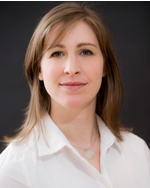
Ms. Deb Vaughn
STEM to STEAM: Finding a Seat at the 'Cool Kids' Table
Posted by Mar 05, 2013

Ms. Deb Vaughn
STEM is like the most popular kid in school these days. Everyone wants to sit at the same lunch table and share Doritos.
Fortunately for the arts community, we have a powerful resource as the national conversation transforms from STEM to STEAM: Rep. Suzanne Bonamici (D-OR) and Rep. Aaron Schock (R-IL) announced the formation of a Congressional STEAM Caucus last month.
The group had a successful kick-off on February 14. Rhode Island School of Design President John Maeda, an advisor to the Caucus, regularly speaks about the inextricable connection between art and science and Bonamici echoed the sentiment at Oregon’s 2012 Arts Summit.
While our representatives in Washington, DC, are hard at work advising on federal policy, our state is also taking steps to assure we’ve got “STEAM heat” (thank you, Bob Fosse!).
In Governor John Kitzhaber’s proposed 2013–2015 budget, which is now being considered by the legislature, there is a proposal for an initiative called “Connecting to the World of Work.”
Included in that proposal is funding to support partnerships between schools, arts organizations and businesses to increase opportunities for students in grades 6–12 to connect with creative industries. There is conversation about including internships, mentorship programs, industry residencies in schools, and student residencies at industry firms.
Read More


 Danielle Brazell
Danielle Brazell

 Janet Langsam
Janet Langsam



















